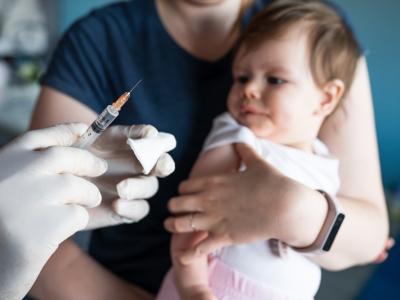Mar 12, 2012
WHO confirms 2 H5N1 infections, 1 fatal
The World Health Organization (WHO) today confirmed two H5N1 avian influenza cases, one of them fatal, that were first reported by the media last week. The first case is a 31-year-old Vietnamese man from Dak Lak province who got sick Feb 29 and sought medical care the same day, according to a WHO statement. He was hospitalized on Mar 4 for viral pneumonia and was transferred the next day to a referral hospital, where he is still being treated. An investigation revealed he had helped slaughter and consumed sick poultry. The WHO said so far no other close contacts have shown any respiratory symptoms. His illness marks Vietnam's 123rd case, which includes 61 deaths.
Mar 12 WHO statement on Vietnamese case
The second case is a 24-year-old Indonesian woman from Bengkulu province who got sick Feb 23, was hospitalized the following day, and died on Mar 1, the WHO said. An investigation found she may have had environmental exposure to the virus due to the recent sudden deaths of poultry. The woman is listed as Indonesia's 187th H5N1 case and its 155th fatality. The two cases push the WHO's global H5N1 count to 596 cases and 350 deaths.
Mar 12 WHO statement on Indonesian case
WHO global H5N1 case count
H5N1 strikes poultry in India and Nepal
Veterinary officials in India and Nepal reported fresh H5N1 outbreaks in poultry, according to media and official reports. The outbreak in India occurred at a government poultry farm in Tripura state, according to a Mar 10 report from Manorama Online, a newspaper based in Kerala, India. Teams were on standby to begin culling at the farm, which housed 3,871 birds. In January an outbreak was detected at another government poultry farm located about 12 miles from the latest outbreak site.
Mar 10 ManoramaOnline story
Elsewhere, livestock authorities in Nepal reported three more H5N1 outbreaks in backyard birds, according to a report yesterday to the World Organization for Animal Health (OIE). The outbreaks occurred in two districts that reported outbreaks earlier this year, Mechi and Koshi. The three latest outbreaks killed 326 birds, and 142 more were destroyed to control the spread of the virus.
Mar 11 OIE report
ECDC issues influenza risk assessment
Flu activity will likely increase in European countries that are just starting to see unusually late-season transmission, though the arrival of spring weather in some locations may blunt the spread of the disease, the European Centre for Disease Prevention and Control (ECDC) said today in a risk assessment. Overall seasonal flu vaccine coverage has declined only slightly, it said. Though analysis of circulating flu strains has raised concerns about genetic drift in H3N2 and influenza B strains, it's too soon to say how the changes affect flu vaccine effectiveness. The ECDC said though few pandemic 2009 H1N1 (pH1N1) viruses have circulated this season, a disproportionate number of severe infections have been linked to the strain. Flu outbreaks in long-term-care settings have been a feature this season in the first-affected EU countries. Health officials have seen a rise in all-cause mortality in older people in four European countries, but it's not clear if the cause is the cold weather, influenza H3N2, or some other reason, the ECDC said. The agency reminded clinicians to be aware of the greater likelihood of alternate flu manifestations this year in older patients, including pneumonia, cardiovascular, and cerebrovascular pathology. As the flu season progresses, ECDC experts hope to answer questions about late-season influenza B circulation, vaccine effectiveness, and premature mortality in older people from H3N2 infection.
Mar 12 ECDC report
Study: Pigs shown to be valid model for flu infection in humans
Pigs immunized with two types of pH1N1 flu vaccines produced a strong antibody response similar to that produced in humans, showing they may be a good animal model for studying the disease in people, according to a new study. UK researchers assessed the immune response in inbred large white pigs 3 months after vaccination with either a whole-virus or split-virus pH1N1 vaccine and after inoculating the animals with pH1N1 viruses. Three pigs received one dose of adjuvanted split-virus vaccine, three received two doses of whole-virus vaccine 3 weeks apart, and two control pigs received a non-vaccine injection. The group found that both vaccines elicited systemic humoral responses and the split-virus vaccine also elicited an enhanced cell-mediated immune response. The split-virus vaccine generated significantly higher hemagglutination-inhibition (HI) titers after one vaccination, and pigs vaccinated with the whole-virus vaccine showed a good HI response—though still lower than the other vaccinated group—only after the second shot. They found, however, that all pigs, vaccinated or not, had similar levels of viral RNA in their nasal cavities after live-virus challenge. They conclude, "This animal model offers improvements over that of mice and ferrets with clinical, pathological, and immune responses similar to those induced in humans, and therefore has potential wide utility."
Mar 9 PLoS One study
Smartphones may aid in gathering disease data
Smartphone surveys may be cheaper and more accurate for gathering disease information than paper surveys in the developing world, according to research presented today at the biennial International Conference on Emerging Infectious Diseases (ICEID) in Atlanta. Researchers compared survey data from 1,019 paper-based questionnaires and 1,019 smartphone questionnaires at four Kenyan flu surveillance sites. Respondents had respiratory illness. Only 3% of smartphone surveys were incomplete, compared with 5% of paper questionnaires, and none of the mandatory responses in the smartphone questionnaire were left blank, compared with 4% with traditional questionnaires. Also, smartphone data were uploaded into a database within 8 hours, compared with 24 days for paper-based data. The cost of setting up and operating the paper-based system for 2 years was $61,830, compared with $45,546 for the smartphone system. "Collecting data using smartphones has improved the quality of our data and given us a faster turnaround time," said Henry Njuguna, MD, sentinel surveillance coordinator at CDC Kenya, in an ICEID news release. "It also helped us save on the use of paper and other limited resources."
Mar 12 ICEID news release


















